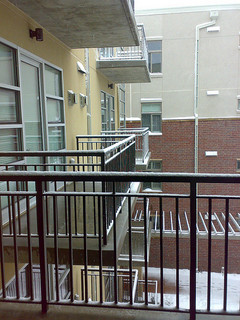Sometimes legal standards are relatively strict – If a driver’s blood alcohol content is greater than 0.08%, the driver is legally drunk (though a lower BAC can certainly be a factor in finding a driver was reckless). In contrast, some legal principles do not have a strict definition, such as what renders a property legally uninhabitable. There is no strict definition of habitability under California law. Supreme Court Justice Potter Stewart famously wrote, “I know it when I see it” in a case on pornography; a similar comment could apply to judging whether a dwelling is uninhabitable. In a previous post, we reviewed the overall contours of the implied warranty of habitability. In this one, we focus on just how courts and lawmakers have drawn the line between habitable and uninhabitable dwellings.
 The Basics: California Civil Code 1941.1
The Basics: California Civil Code 1941.1
The starting point for examining habitability in California is Civil Code 1941.1. This section lists a number of characteristic that a dwelling must have, declaring a unit untenable if the unit is “substantially lacking” any listed item. Still, the Department of Consumer Affairs is clear that the list just constitutes guidelines and only contains minimum requirements. Items included in the code are, in brief: 1) Waterproofing and weather protection; 2) Plumbing or gas; 3) Hot and cold water; 4) Heat; 5) Electric lights; 6) Clean property (at the start of the lease and in areas the landlord controls) and free from rodents/vermin; 7) Trash receptacles; 8) Stairs, railings, and floors in good repair; and 9) Lockable mail receptacle.
Building Beyond the Basics: Other Regulations, Codes, and Caselaw
Section 1941.1 also makes reference to building and housing codes as well as health and safety provisions. Mold and lead are two health threats that can make a property uninhabitable. Additionally, local bodies can set rules regarding habitability. A key example can be found in the San Francisco Housing Code which requires heating units capable of sustaining 68 degrees among other provisions that go to habitability, even if not labeled as such.
Court-made law has also expanded the reach of the warranty of habitability. Together with other sources, caselaw has included the following items that can render a dwelling uninhabitable: Lack of working smoke detectors; Persistent sewage overflows; Too much noise and too many disruptions from other tenants of nearby units; and Properties made unsafe by narcotics dealing. This list is far from complete or definitive. Notably, trial court decisions are often unreported so there are likely many more cases on habitability than are found in the caselaw reports (we do keep tabs on trial-level cases that are relevant to housing issues).
A Quick Note on Attorneys’ Fees
One additional item that is often of concern to clients is attorney’s fees. First, examine your lease. Many housing contracts contain attorneys’ fees provisions and implied warranty of habitability cases often fit within these provisions, meaning that if you win your case, the other side will have to pay your attorneys’ fees. Second, talk to us about your concerns, we can help ensure any fees are affordable and work out a payment plan.
Protecting Renters Throughout California
You have a right, a legal right and a moral right, to a safe, livable home. If your California landlord is failing to provide or maintain a habitable unit, please call us. Our San Francisco-based landlord-tenant lawyer represents clients in San Francisco, Sacramento, Berkeley, Oakland, and, in certain instances, in Los Angeles and other Southern California locations.
See Related Blog Posts:
An Overview of The Implied Warranty of Habitability Under California Law
California Landlord-Tenant Law Protects Renters from Common Contaminants
(Photo by Vagabond Shutterbug (flicker user))
 San Francisco Injury Lawyer Blog
San Francisco Injury Lawyer Blog

